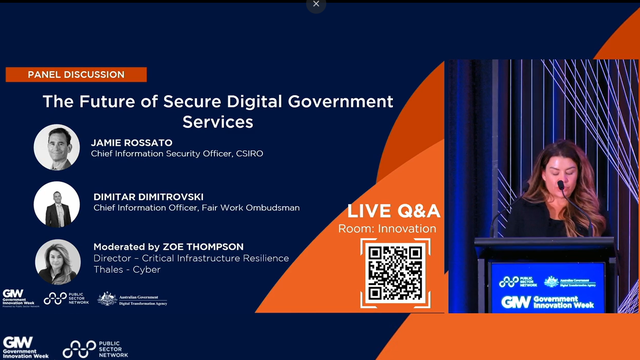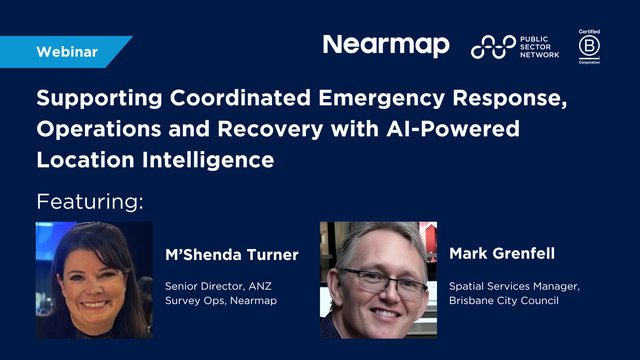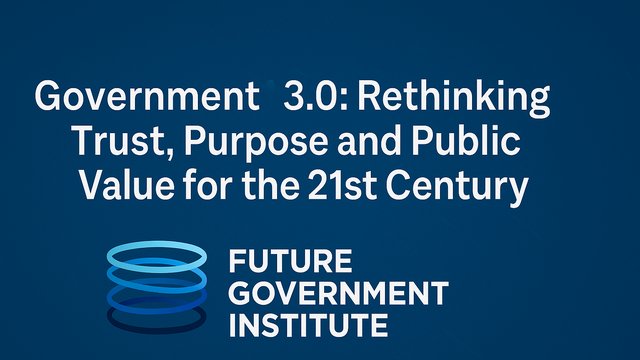
In a digital age where convenience is king, governments are stepping up to the challenge, revolutionizing service delivery to meet the needs of a rapidly evolving society. There are a few key initiatives being prioritized, aimed at improving efficiency, accessibility, and responsiveness in the delivery of public services - from modernizing digital infrastructure to the deployment of AI. So let’s dive into the 6 biggest digital government service design trends, plus we'll see how global government innovation leaders are already harnessing these trends to drive superior citizen outcomes.
1. Innovation in Digital Infrastructure – Digital infrastructure, the network over which government services, business and social connectivity can flourish, is a key factor in each country’s ability to compete. Governments are increasingly moving their IT infrastructure to cloud-based platforms as they offer scalability, flexibility, and cost-effectiveness, allowing governments to improve agility and optimize resource utilization. Governments are also partnering with the private sector to leverage their expertise and resources in modernizing digital infrastructure, joint innovation initiatives, and collaboration on cybersecurity efforts.
Estonia has become a world leader for their resilient digital infrastructure. Even before the pandemic, the government had spent decades developing digital classrooms, online teaching materials and a huge range of online public services so they were already in place when the pandemic hit, as other countries scrambled to cope with the enforced social distancing. Even more crucially though, Estonians were already educated in the existing digital services and knew how to access and use them.
2. Deployment of AI – AI has developed at speed, and governments around the world are keen to embrace its use but most governments are behind in deploying the technology. A key priority now is to better develop plans to integrate the technology and importantly, to reassure the public on its safety and accuracy. Governments are aware of the many ways in which AI can improve service delivery - from AI-powered chatbots and virtual assistants to provide citizens with quick and personalized responses, to leveraging predictive analytics powered by AI to forecast trends, identify patterns, and anticipate citizen needs. By analysing data on citizen behaviour, preferences, and feedback, governments can customize service offerings, recommendations, and communications to better meet the needs of diverse populations.
United Kingdom's National Health Service (NHS) has implemented AI-driven solutions to enhance patient care, optimize resource allocation, and streamline administrative processes. The organization has implemented virtual wards which support patients who would otherwise be in hospital to receive care. Remote monitoring technology such as apps and medical devices can assess patients’ health and care while they’re being cared for at home. Also by leveraging machine learning algorithms, the NHS can predict patient needs, identify high-risk individuals, and personalize treatment plans to deliver more effective and efficient healthcare services.
3. Collaborative Government Services – Digital governments are prioritizing interoperability between different government systems and databases. By ensuring that systems can communicate and share data effectively, governments can provide more cohesive and personalized services to users across various touchpoints. They are now able to analyse multiple sources to identify trends, optimize service delivery, and tailor services to better meet the needs of their citizens.
To take the success of collaboration even further, governments are focused on implementing collaborative platforms that enable internal and external stakeholders, including government agencies, citizens, businesses, and non-profit organizations, to collaborate on projects, share information, and co-create solutions to complex challenges.
A strategy to enhance life outcomes for children and families at risk of poor outcomes in New Zealand, involves joint policy work and collaborative service delivery among the health, education and welfare sectors of government. It’s clear that ‘sharing is caring’ as evidence showed that the improved collaboration helped to better clarify roles and strategies, design and manage ways of working together, build consensus over basic goals, and solve problems in a pragmatic way.
4. Zero-Trust Architecture – As organizations move to a mix of cloud-based, on-premises, and hybrid network models, traditional network defences can no longer protect an organization’s information communication technology assets. The evolving threat landscape and the rise of insider threats urge a shift towards a zero-trust model, where no entity, whether inside or outside the network, is inherently trusted by default. Its principles include multi-factor authentication (MFA), users and devices are only given access to the resources necessary to perform their tasks, and networks are segmented into smaller, isolated zones to contain potential breaches. The approach also implements continuous monitoring of network traffic, user behaviour, and device posture, and data is encrypted both in transit and at rest and strict access control policies are enforced.
The Government Zero Trust Architecture (GovZTA) has provided a framework for the Singapore Government to implement Zero Trust, which is based on the core principle of “never trust, always verify.” Constant verifications are needed to allow defenders to put in effective mitigation measures to limit the impact of attacks. This adopts a layered defence approach throughout the stages of a cyber kill chain.
5. Digital Credentials – Digital credentials have emerged as a top priority for governments worldwide due to their potential to revolutionize credentialing processes and enhance service delivery across various sectors. By implementing robust digital identity verification systems, electronic document management platforms, and secure payment gateways, governments can enable citizens to access and complete a wide range of transactions and interactions entirely online, without the need for physical contact or paper-based processes. By digitizing credential issuance, verification, and management, governments can save time and resources while ensuring the accuracy and integrity of credential data.
Service NSW has cemented itself as the flagship of the NSW Government and as a world leader in customer service with its Service NSW app and digital credentials system. The organisation has partnered up with other governments and NGOs to provide a single point of contact for people affected by floods, fire and other emergencies, as well as expanding NSW’s new path-breaking identity and credential system to better link up banking, insurance, transport, health and other services. The purpose of the app and Service NSW itself is to ensure that all services are collated around the customer rather than having to deal with multiple service providers and responders, also giving customers the choice of who to share information with. The services won’t stop there either, as there are huge opportunities to streamline enrolment in schools and TAFE, helping users to navigate available grants and subsidies as well as to eliminate delays finding work and childcare by translating everything from qualifications to vaccination certificates to digital documents right at citizens’ fingertips.
6. Proactive Services Based on Life Events – A priority noted in many governments that will undoubtedly bring ease to the lives of citizens is implementing the ability to anticipate and address the needs of citizens at key milestones such as births, deaths, marriages, and career changes. Governments can then provide tailored support and information when it is most relevant. So a life-event trigger will start service delivery without the citizen necessarily needing to be involved then it will start multiple types of services arising from a single life event.
Childbirth, for example in Austria triggers enrolment in the country’s family allowance programme with no need for citizens to file a claim. The review process is automated via data transfers between hospitals, local tax offices and other institutions, so the citizens can not only focus more time on their child and family, but it also frees up government staff to perform other tasks. Through this process governments can foster greater trust, satisfaction, and engagement among citizens while improving the overall efficiency and effectiveness of public service delivery.
These top priorities for digital government to modernize service delivery represent a strategic roadmap for enhancing citizen experiences, improving operational efficiency, and fostering innovation. By focusing on citizen-centricity, data-driven decision-making, cybersecurity and collaboration, governments can navigate the complexities of a rapidly evolving digital landscape while meeting the diverse needs of their citizens. Embracing these priorities will not only ensure that governments remain responsive and resilient in the face of challenges but also pave the way for a more inclusive, accessible, and efficient public sector in the years to come.

































